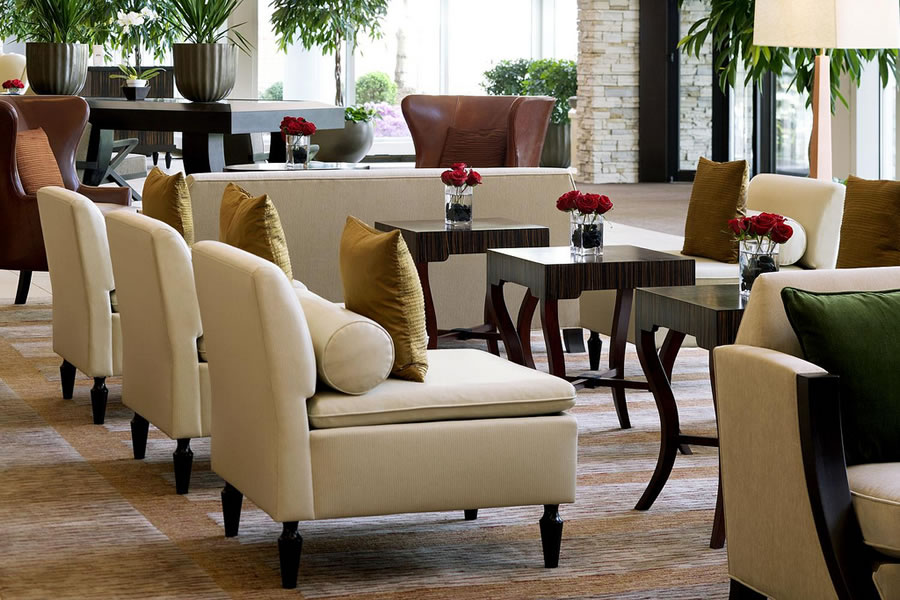|
The various changes in the external environment have forced the once relatively closed Chinese furniture industry to collide, interlace, and merge with various forces, bringing challenges and stimulating more vitality. And external forces will also promote continuous changes within the Chinese furniture industry to adapt to the new environment. In our opinion, several important changes are taking place within the Chinese furniture industry. 1. Sales channels have become fragmented, and traffic operation has become a required courseIn today's China, including major e-commerce platforms, home improvement companies, department stores, community stores and so on, are becoming new furniture sales channels, and the relationship between traditional furniture and building materials stores and brands is becoming more and more delicate. For Chinese furniture companies, chain home stores are still the main channel, but with the increasing diversification of channels and the advancement of traffic entrances, this binding will inevitably gradually loosen. At the same time, in the era of increasingly scarce traffic, Chinese furniture companies and distributors should shift their emphasis on "channels" or "direct sales" to the acquisition and operation of traffic, that is, the growth of new customers and the activation of old customers. This brings new challenges to the capabilities of manufacturers and distributors. In addition, another result of gradually fragmented sales channels is the enlargement of the role of terminal stores-the "last mile" service may become an important battlefield for future brand competition. 2. Changes in the relationship between Chinese furniture manufacturers and distributorsThere is no doubt that the "empowerment" of Chinese furniture manufacturers for terminal stores will become more and more important. How to maximize the enthusiasm of furniture stores and distributors as capillaries will directly determine the brand's industry status. Of course, dealers' "reverse selection" will become more and more common. Some furniture industry experts believe that Chinese furniture manufacturers and distributors must establish a collaborative mechanism for product research and development, marketing and customer acquisition, the support of the store's personalized operation management system, and the collaborative delivery and assembly services of manufacturers. So for Chinese furniture dealers, what are the core capabilities of the future? When product and service information becomes more and more transparent, how can Chinese furniture dealers earn the "price difference"? Professor Xu Baiming, an authoritative expert in the Chinese furniture industry, believes that the future Chinese furniture stores will become a comprehensive experience center and service station, and dealers must work hard To build the capacity of human care and service system. 3. Changes in the competitive landscape of China's furniture industryThe COVID-19 epidemic since 2020 has become an important watershed for the development of China's furniture industry. It is precisely because of this epidemic that the advantages and disadvantages of different categories of the Chinese furniture industry have begun to appear. After the epidemic, China's upholstered furniture company experienced an initial small shock, and subsequently performed well in the domestic and foreign markets. In the future, with consumers' demand for upgrading the quality of life, China's soft furniture is still one of the most potential growth areas. In addition, categories such as Chinese office furniture and Chinese outdoor furniture have also become export hotspots. In the medium and long term, as China's finished furniture companies and China's custom-made furniture companies are moving towards integration, it is possible to usher in new changes. That is, after making up for the shortcomings of "customization", Chinese finished furniture companies have begun to gradually catch up, and the market once taken away by Chinese custom furniture companies may gradually return. We will see that Chinese finished suite furniture manufacturers gradually "find the feeling", give play to their overall style control and detail processing advantages in the overall home, and go out of the "full case design" route that is difficult for traditional custom furniture companies to achieve. 4. The poverty and return of Chinese furniture design The relationship between the furniture industry and "design" is often detached. Product design and development are either handed over to an outsourcing design agency, or the furniture manufacturer makes decisions internally, rather than conducting scientific research and analysis on products, markets and consumers. This model has often brought the success of explosive In fact, Chinese furniture products have gone through several stages of evolution. From the initial short supply to the pursuit of changes in crafts and materials, to the pursuit of different popular styles, it has reached the stage where it has to change its thinking. Professor Xu Baiming believes that in the past, Chinese furniture design was "dual orientation of materials and styles", one-sided pursuit of changes in materials or styles. But this path has come to an end, and the fundamental way out lies in design orientation and design innovation. We will describe this part in detail in our forward post. Previous Post:Four External Variables That Are Accelerating The Transformation And Reshaping of China's Furniture Industry
|
TAGS
All
Archives
May 2024
|







 RSS Feed
RSS Feed